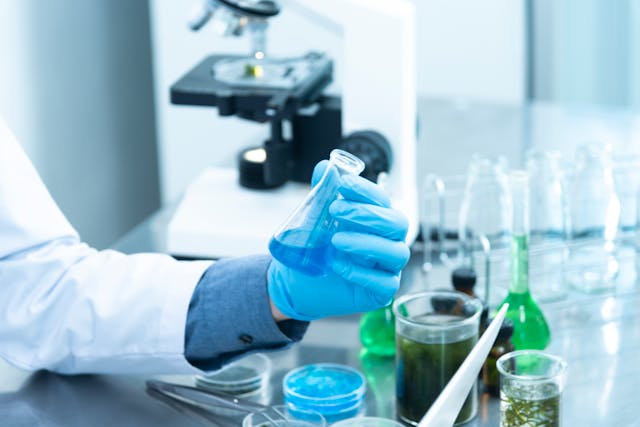
How does artificial flavoring work? Artificial flavorings work by replicating the natural chemicals in foods that our taste buds detect.
Before we look at how artificial flavoring works, we need to look at how we taste. We taste in the same way that we see, hear, and smell. We take physical things from the world and we turn them into electrical signals that our brains can analyze. With hearing, that happens when sound waves move the liquid in our ear, which makes the small hairs move, which is translated into an electric signal that goes up our nerves to the brain. We see when light waves are picked up by the cones and rods in our eyes, which triggers an electrical signal that goes to the brain. We smell by having receptors for chemical compounds that trigger an electrical signal that goes to the brain. All of these signals are different depending on what they detect and the intensity of what they have detected. The brain takes all of this information and gives us images, or sounds, or smells.
The tongue works in a similar way to the nose. All over our tongues, we have about 4,000 taste buds. Each taste bud is found inside a small bump called papillae. There are three different kinds of papillae called fungiform, circumvallate, and foliate. They all contain taste buds, but the fungiform are on the sides and the tips of the tongue. The circumvallates are on the back of the tongue, and the foliate is on the very back of the tongue, on the sides. Their job is to increase the surface area of the tongue and make a funnel that the chemicals from the food can get in through. Each taste bud is a collection of cells with an opening called a taste pore that is filled with a liquid, which is how the molecules get in. The cells are taste receptor cells and they point upwards towards into taste pore. They have receptors, which are microscopic hairs called microvilli. The other end of the receptor cells are attached to nerves. When we chew our food, it breaks down, and the molecules rain down onto our tongue. They go in through the taste pore and touch the receptor of the receptor cells. These receptors react to sugars (sweet), acids (sour), sodium and chloride (salty), bitter chemicals, and glutamic acid or aspartic acid (umami). There is also spicy, but that is a sensation and not a taste. The taste receptors contact these molecules and send different signals depending on what they have encountered. The brain can then make a map of what tastes and how many of them to give a flavor. These compounds are volatile, and they become a gas and travel up to our nose at the same time. It is very difficult to have taste without smell because they go together. You will know if you have ever covered your nose and tried to eat something.
Interestingly, we are able to detect more bitter tastes than any other, and we can detect them more strongly at the back of our tongues than any other taste. This is probably an evolutionary trait because bitter foods are usually poisonous, and the back of the tongue gives the person a chance to get rid of the food before they swallow it.
So, how do artificial flavorings work? Because scientists know what flavors we associate with natural molecules, all they need to do is replicate those molecules or use molecules that would have a similar effect. The easiest way to make something taste of something else is to use the flavor of that thing. If you want to make a cake taste like pineapple, adding real pineapple is the easiest way. However, real fruit is expensive and this can push the price of the cake up. If a company wants to make a cheap pineapple cake, they have to replicate the pineapple taste. Pineapple flavor needs to be sweet, fruity, and a little tart. This can be made with allyl hexanoate, allyl heptanoate, allyl cyclohexane propionate, methyl 3-methylthiopropionate, and ethyl 3-methylthiopropionate. These chemicals produce the taste and smell of pineapple. Allyl hexanoate is actually found in real pineapples, but the version used in the flavoring is synthesized in a lab. This makes the products very cheap. Experimenters work out what chemicals make the best flavors by mixing different quantities of several compounds until they find one that tastes just like the real thing. So, if the cake you are eating says “pineapple flavoring” in the ingredients, then the chemicals listed above are what you are eating. The people that make flavors are called flavor chemists, and they can reproduce any natural flavor that we know. And this is what I learned today.
Sources
https://www.scielo.br/j/cta/a/fNCV6Z8VhPqt4CKFRW8GdRj
https://www.ncbi.nlm.nih.gov/books/NBK279408
https://www.sensorysociety.org/knowledge/sspwiki/Pages/Taste%20Anatomy.aspx
https://my.clevelandclinic.org/health/body/24684-taste-buds
https://magazine.medlineplus.gov/article/how-do-we-tasteand-why-does-it-go-wrong
https://science.howstuffworks.com/question391.htm
Photo by Chokniti Khongchum: https://www.pexels.com/photo/person-holding-laboratory-flask-2280571/
